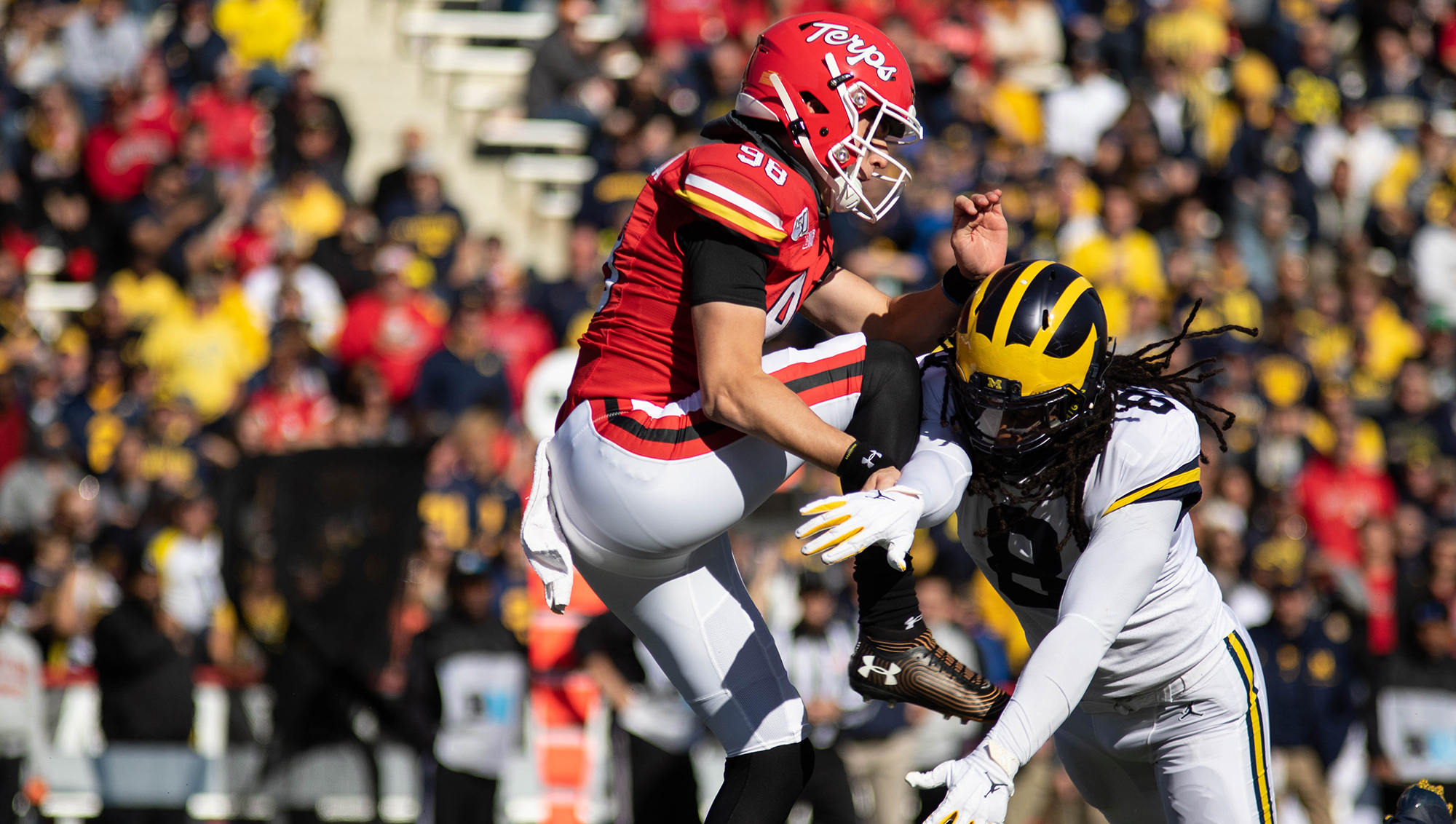Views expressed in opinion columns are the author’s own.
The first sentence of university President Darryll Pines’ Aug. 19 letter to the community reads, “transparency and testing are two key measures in our plans for the gradual reopening of campus.” Since then, the administration has made a string of vague and inconsistent policy decisions, including quickly suspending and then un-suspending “noncompliant” COVID-positive students and refusing to even speak to the union that represents campus workers when determining impending budget cuts, just to name a few. The latest in this confusing saga is the unanimous decision by the Big Ten presidents to resume the football season amid a recent spike in positive results. Oh, and 12 other Maryland athletic teams are also returning to practice.
Throughout all athletics testing so far, 98 athletes have tested positive for COVID-19, with a positivity rate of 3.7 percent. And still, on Wednesday, the Big Ten announced they would be returning to play on Oct. 23rd, with the help of a “yes” vote from Pines.
There are a few things about this decision that bother me. For one, the university already did the whole “indefinite suspension” thing when they shut down athletic activities in early September after 46 athletes tested positive for the virus. The administration made a pretty big deal over seeming serious about it, too. Pines even went as far to call it a “reprimand” intended to “send a message” to the athletes, stating “in this particular case with student-athletes, the reprimand was suspension of all sports, for everybody. So, if you’re part of the family … you’ll have to suffer.”
This time around, the circumstances were fairly similar, with 35 more athletes testing positive for COVID-19. And yet, when presented with an opportunity to double down on just how serious the university is about COVID-19, Pines opted to vote with the other Big Ten presidents, many of whom were also dealing with athlete outbreaks. Most of me thinks the decision was motivated by the massive amount of profit that football players generate for the university, for no real compensation. Another part of me thinks the Big Ten presidents really trust that the “significant medical protocols” of daily antigen testing, cardiac screening and a more “data driven” approach to decision-making will keep the teams from contracting COVID-19 and spreading it to their communities.
Given the nature of both the sport and the city of College Park, I expect all these protocols will just allow for a second, quicker shutdown of the season. As players go back about their business, they’ll have quick, accurate information regarding just how fast they’re spreading the virus to the rest of their team and the community.
It’s also important to note that we don’t even have a real idea of how many cases are actually on the campus. The university’s COVID-19 dashboard, an attempt to display that oft-mentioned transparency, has only raised more questions and confusion. Earlier this month, The Diamondback’s editorial board wrote that “the university is using the dashboard to paint an inaccurate picture of COVID-19’s presence in College Park, downplaying the very real toll the virus is taking on our community.”
The situation is actively getting worse. With a large number of “unverified” cases, a considerable delay in on-campus testing dates, and a certain, reliable few who continue to act as if COVID-19 just decided to pack it up and leave, I seriously doubt the ability of the university and the entire Big Ten to put together some semblance of a season without multiple outbreaks that could have severely negative impacts for both the universities and their surrounding communities.
Let’s say the best case scenario occurs and the medical protocols allow student-athletes at Maryland and across the Big Ten to stay safe and healthy. Will those same protocols and daily antigen testing be available to the campus workers who clean and sanitize locker rooms, or even regular students? That kind of daily testing could be especially beneficial for the freshmen living in the Soviet bloc housing that the university calls North Campus.
In an interview with Outkick on Thursday, President Trump praised the Big Ten’s decision. “[Big Ten Commissioner] Kevin Warren did a fantastic job, by the way, gambled a lot of credit. He got out there, and they just did a big reversal.” Like Trump, Pines understands that this could make the impact of the virus even worse for the community.
But we’ve known that this university prioritizes profit over the health of its workers, students and faculty. If they didn’t, the campus would be empty right now and staff would be compensated. If the potential revenue from an uncertain season can change a “reprimand” to a unanimous yes that easily, I worry that it might be all downhill from here.
Malcolm Ferguson is a senior English and government and politics major. He can be reached at mferguso@terpmail.umd.edu.



